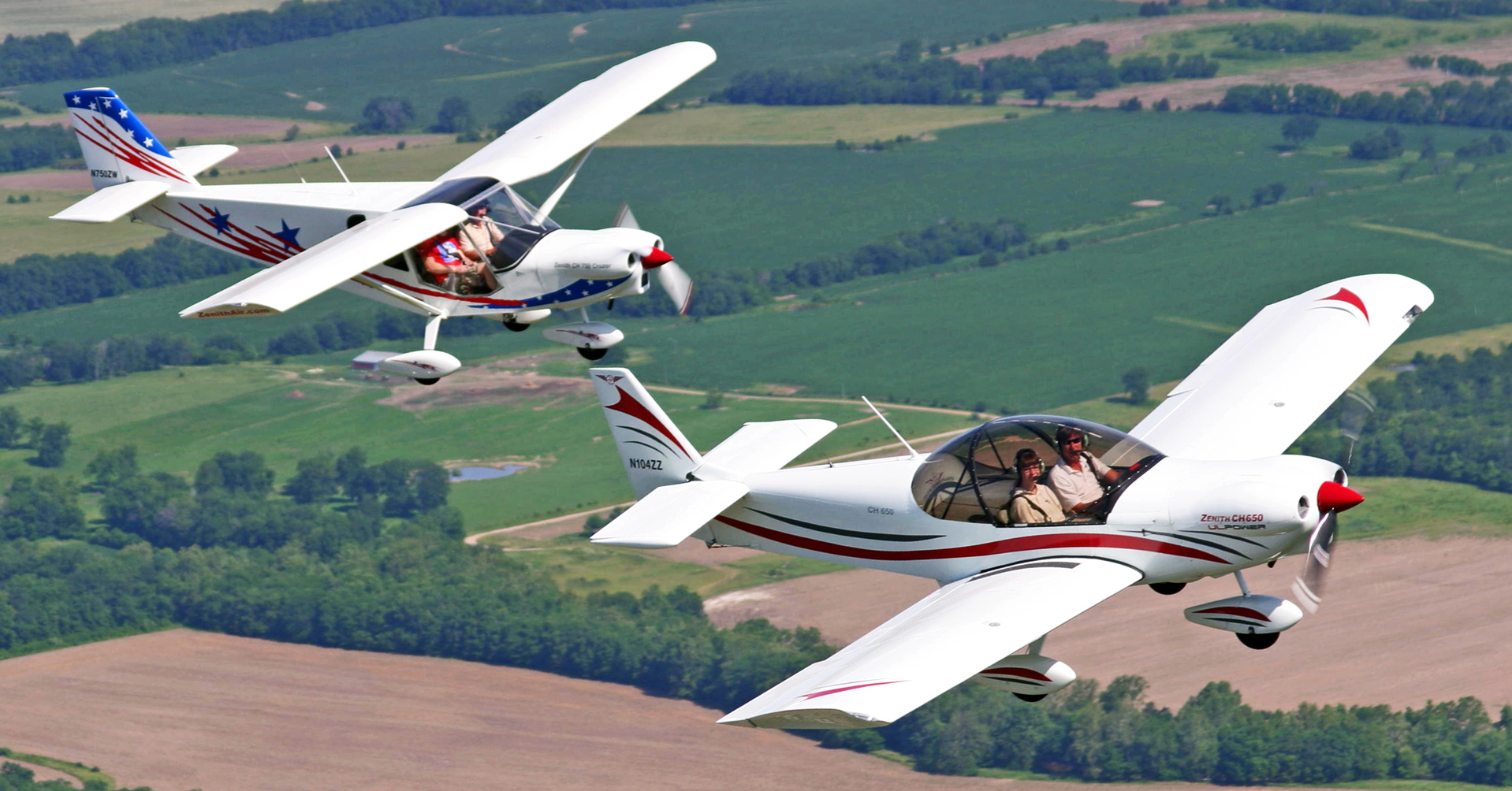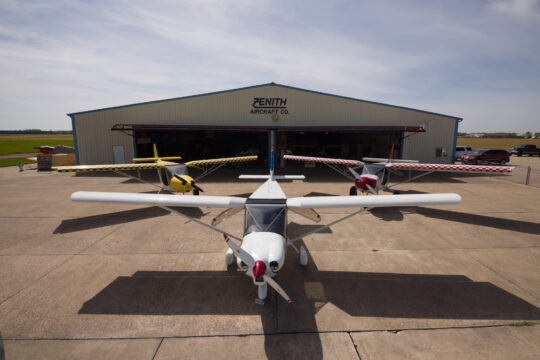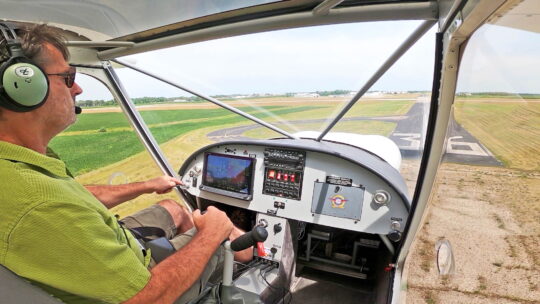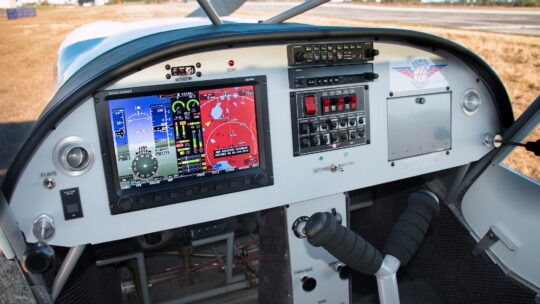 Purchasing a used airplane can be risky because it’s sometimes difficult to determine whether the aircraft has been taken care of properly. Buying a used kit aircraft? Even riskier. Not only do you have to worry about wear and tear, but also whether the builder knew what they were doing. But that doesn’t mean buying one is foolish. It might allow you to find an aircraft that truly fits your needs, and possibly save you money because its home-built origin will likely reduce the price.
Purchasing a used airplane can be risky because it’s sometimes difficult to determine whether the aircraft has been taken care of properly. Buying a used kit aircraft? Even riskier. Not only do you have to worry about wear and tear, but also whether the builder knew what they were doing. But that doesn’t mean buying one is foolish. It might allow you to find an aircraft that truly fits your needs, and possibly save you money because its home-built origin will likely reduce the price.
If you feel comfortable going this direction, then a used Zenith is worth looking at—and if you don’t, remember that Zenith has also made the CH 750 as a factory-built SLSA, of which there are currently 42 registered in the U.S. Anyway, the company has been making kits for three decades and it has a great reputation in the Light Sport world. Its STOL CH 750 model is especially popular among builders, and you can find used ones up for sale fairly often. This article is an introduction to the aircraft and will address some important considerations if you’re thinking of buying one that’s already been in the air.
Development, Features, Flight Characteristics

The Zenith family. CH 750 Cruzer in front, CH 750 and CH 750 SD behind. (Photo: Paul Andrews.)
The Zenith Aircraft Company was born in the early 90s in Mexico, Missouri. Its kit planes are based on the work of designer Chris Heintz of Zenair Ltd. His son, Sebastien, is the owner of Zenith. Both have been inducted into the EAA Hall of Fame for their contributions to aviation. The senior Heintz has designed a number of aircraft, but at present Zenith offers three of them in kit form: the STOL CH 701 high wing; the CH 750 high wing, with STOL, Cruzer and Super Duty (SD) variations; and the CH 650 low wing. All models are set up with tri-gear and, with the exception of the SD, all are Light Sport eligible. The SD variant can’t make Light Sport limits as it has a third seat and a 1900-pound gross weight.
While Zenith did produce some pre-built aircraft early on, the company is now entirely focused on making kits—and, as mentioned, there are fewer than 50 out there in the world. Zenith reports it’s sold more than 2000 kits all over the world, and Heintz estimates that at least 1000 of them are flying. Our own data, taken from FAA registrations, shows 1301 of them registered.
The CH 750 STOL has proven to be the most popular model for builders. “It’s often called the ‘Sky Jeep’ because of its off-airport capabilities, and people love it because it offers a relatively inexpensive way to get into backcountry flying,” Heintz says.
The CH 750, like all Zenith aircraft, is an all-metal aircraft featuring matched hole construction. The kits come with pre-drilled holes so that components easily line up with their corresponding parts. This means builders don’t have to worry as much about measuring and alignment during construction, saving them time and allowing them to put together a straighter plane. This accuracy potential, especially for the airframe and wing, means it should be easier to find a used 750 that flies as well as it should because part misalignment during construction is less likely.
Since the STOL CH 750 is a kit aircraft, there’s no such thing as a standard configuration. “You’re not buying a Zenith as much as you are buying a Zenith kit put together by someone else,” explains Heintz. “Every one of them will be a reflection of the person who built it. And since people are different, you’ll have different airplanes.” Builders have tried a wide variety of engines and avionics packages, and while interiors tend to be spartan some go beyond utilitarian. The basic specifications for the model can be found on Zenith’s website (zenithair.net), but generally speaking a STOL CH 750 is likely to have a maximum speed of around 100 mph at sea level, TAS cruse at 8000 feet of 100 mph, a stall around 35 mph and takeoff and landing distances of 100 and 125 feet, respectively.

Short takeoffs and landings are the CH 750’s forte. (Photo: Paul Andrews.)
The builder’s choice of engine should be a big part of your purchase consideration, according to Randy Shannon, a Zenith SD owner in Drexel, Missouri. The engine’s weight and horsepower can make a significant difference in a Zenith’s performance. “A lot of kit planes are focused toward a particular brand of powerplant, but here you can use an automobile-adapted engine… a non-certified engine like one from Rotax or a number of certified engines,” he explains. “Consider your budget, mechanical ability and knowledge, service possibilities and what you want to be able to do in the plane.”
CH 750s are known for their excellent low-speed handling, gentle stalls, good visibility over the nose, and their short takeoff and landing capability. Some pilots may not like the Y-shaped center stick, but it shouldn’t be hard to adapt to and it does make it easier to get in and out of the plane compared to one with yokes or control sticks. The 750 is fairly roomy for a side-by-side Light Sport, and larger pilots should fit fine unless they’re the size of an NFL or NBA player. As for having a nose wheel on a backcountry airplane? Owners argue you shouldn’t be put off by that. While taildraggers may be the norm, a STOL 750 can handle the rugged terrain that most pilots are qualified to fly into.
Pre-buy Inspection
As with any used aircraft, having an experienced A&P perform a pre-buy inspection is highly recommended. This is especially true for a kit-built aircraft as it was probably put together by someone who wasn’t an A&P. “You’re going to have some beautifully built aircraft… where someone took a lot of time and care…but you’ll also find some that have been slopped together,” warns Heintz. Judge the quality of workmanship and level of finish carefully, he says. A pretty aircraft isn’t necessarily one that’s well built, and an ugly duckling might be perfectly fine. Fit and finish can also impact the price of the aircraft. Heintz encourages potential buyers to do a bit of fact finding. “Learn why the builder made the choices they did, what their mission was and whether that matches up with your needs,” he says.

Used CH 750s may have any kind of avionics on board. That and the type of engine up front will help dictate value and desirability.
Being a backcountry type aircraft, Heintz says the landing gear is where the plane is most likely to have damage. “Some owners take the ‘Jeep’ part of ‘Sky Jeep’ a little too far,” he says, but he believes most backcountry pilots maintain their planes at a higher level because they are going into places where they really don’t want to have problems. The 750’s all-metal construction should make it difficult for someone to hide any serious damage, Heintz adds. He also suggests that since many backcountry aircraft are not hangered, you’ll want to look for signs of corrosion and UV damage.
Maintenance & Ownership
You shouldn’t have additional maintenance concerns for a kit plane in comparison to a factory-built one—IF it was put together properly in the first place. A good pre-buy inspection should reduce the size of that ‘if.’ Hank Morgan, a Zenith owner in Strawn, Texas, jokingly warns that you might end up doing extra work on the plane regardless of how well it was built. “Every aircraft needs to be kept up,” he says, “but with a kit plane you sometimes work on it and think ‘I can make this better.’ And then you find yourself saying ‘if I do this, then I have to do that…and that will affect this so I… etc.” Morgan should know, as he and his pilot wife are in the middle of rebuilding a 750 and a Zenith 701. He says one of the great joys of owning a Zenith is making it your own.
Morgan adds that another thing that makes ownership of a Zenith great is the company’s builder forum. “There’s a lot of good information there about troubleshooting and making improvements,” he says. And, the forum can help you become part of a welcoming community of Zenith pilots. The company recently held a Zenith Homecoming at its Missouri factory, which was very well attended.
Looking for a used CH 750? Check out this filtered page on Aircraft for Sale.


Like most people, I have only bought used aircraft that were airworthy. Airworthy means the aircraft has been maintained; unlike autos. I have had a: 1946 Ercoupe, two each 1964 Cessna 172s, a 1959 Cessna 210, and an experimental half scale corsair. Ercoupe and Cessna that are airworthy are where the value is located. And probably any other aircraft that is airworthy with a current annual inspection or conditional inspection. Unlike autos, aircraft engines must be reliable above all else; which means the technology does not change much over time. Aircraft engines now routinely go 2000 hours to 2500 hours before an overhaul. Insurance around $500 per year. Aircraft hangar from $150 to $500 per month; biggest cost. Annual inspection $1500 to $3000 per year. Cover these costs; and you are ready for aircraft ownership! So not inexpensive and probably why ultralights are so popular. Keep an ultralight in an enclosed trailer or your garage, or both. And save the hangar costs. And not having to go to the airport.
This is Hank and Bridget Morgan, we’re mentioned in the article but we really live in Strawn, Texas! We live strong in Strawn!
Duly noted and corrected!